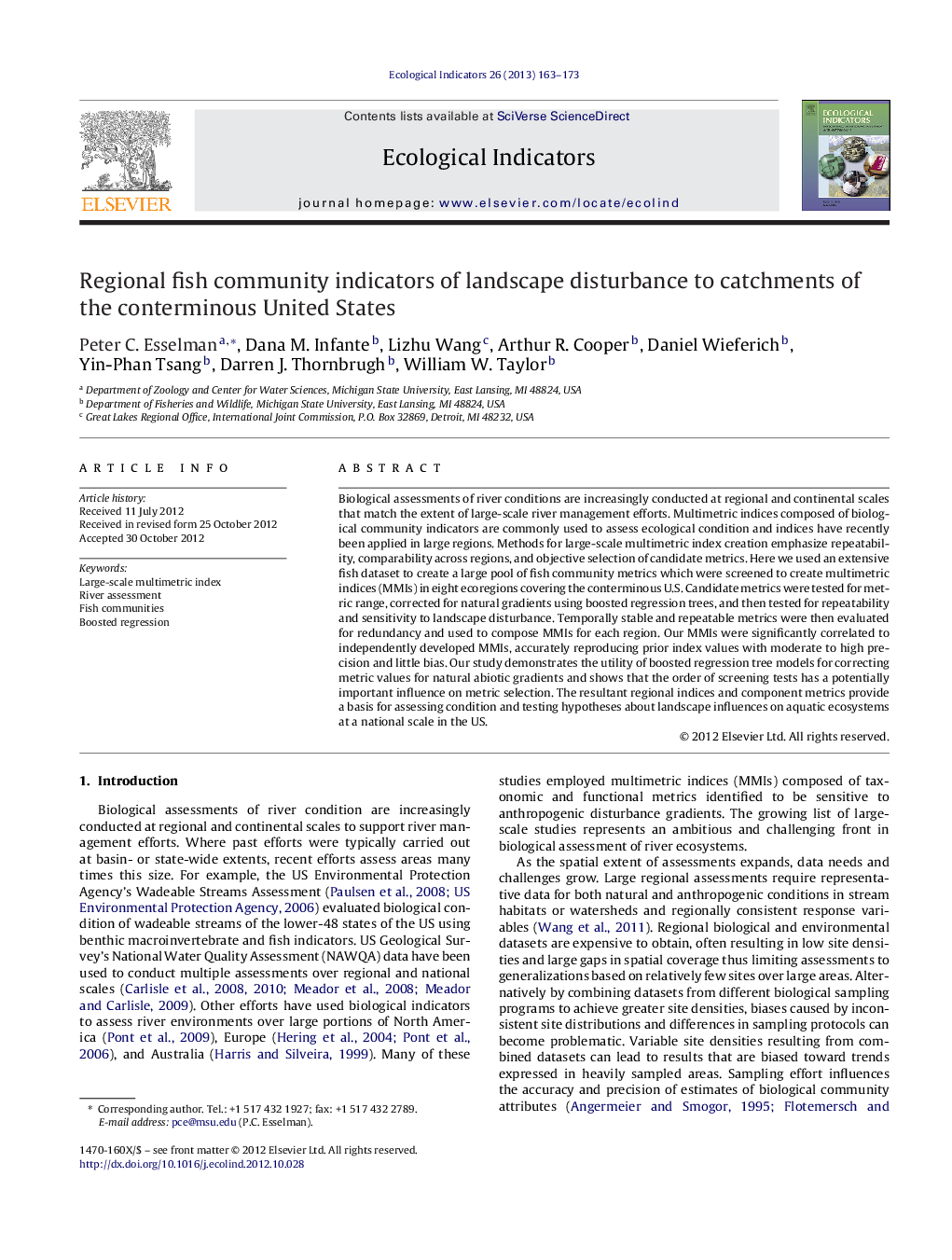| Article ID | Journal | Published Year | Pages | File Type |
|---|---|---|---|---|
| 4373574 | Ecological Indicators | 2013 | 11 Pages |
Abstract
Biological assessments of river conditions are increasingly conducted at regional and continental scales that match the extent of large-scale river management efforts. Multimetric indices composed of biological community indicators are commonly used to assess ecological condition and indices have recently been applied in large regions. Methods for large-scale multimetric index creation emphasize repeatability, comparability across regions, and objective selection of candidate metrics. Here we used an extensive fish dataset to create a large pool of fish community metrics which were screened to create multimetric indices (MMIs) in eight ecoregions covering the conterminous U.S. Candidate metrics were tested for metric range, corrected for natural gradients using boosted regression trees, and then tested for repeatability and sensitivity to landscape disturbance. Temporally stable and repeatable metrics were then evaluated for redundancy and used to compose MMIs for each region. Our MMIs were significantly correlated to independently developed MMIs, accurately reproducing prior index values with moderate to high precision and little bias. Our study demonstrates the utility of boosted regression tree models for correcting metric values for natural abiotic gradients and shows that the order of screening tests has a potentially important influence on metric selection. The resultant regional indices and component metrics provide a basis for assessing condition and testing hypotheses about landscape influences on aquatic ecosystems at a national scale in the US.
Related Topics
Life Sciences
Agricultural and Biological Sciences
Ecology, Evolution, Behavior and Systematics
Authors
Peter C. Esselman, Dana M. Infante, Lizhu Wang, Arthur R. Cooper, Daniel Wieferich, Yin-Phan Tsang, Darren J. Thornbrugh, William W. Taylor,
